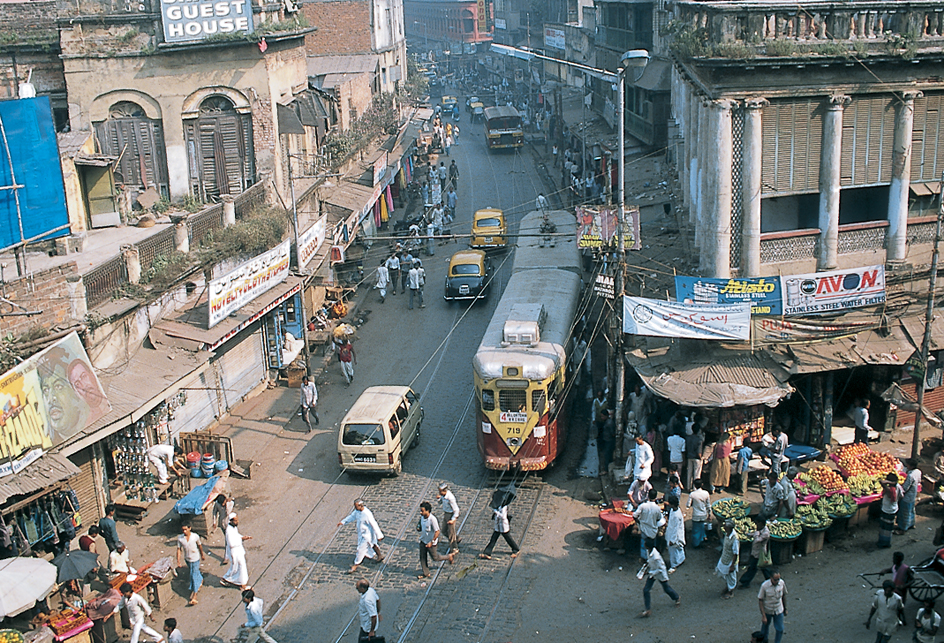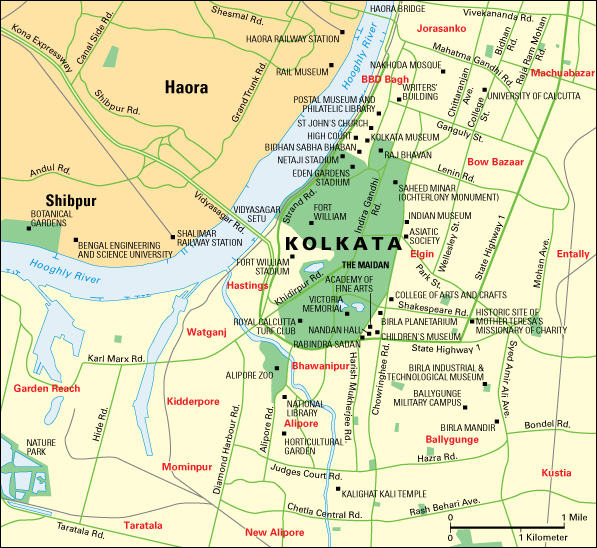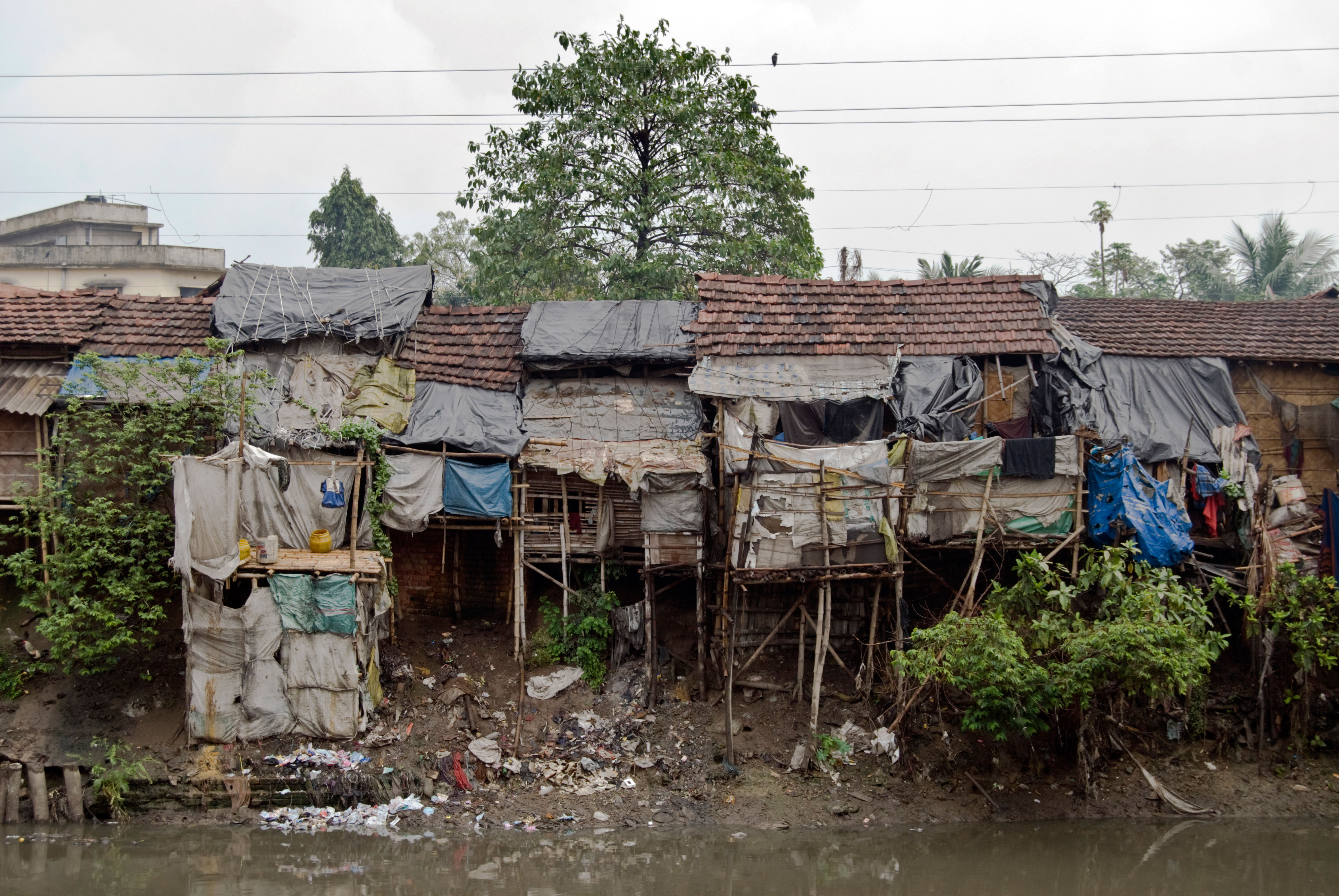Kolkata, << kawl KUHT uh >> (pop. 4,496,694; met. area pop. 14,112,536), is one of the largest cities in India. Kolkata serves as India’s chief port for trade with Southeast Asia. The city lies along the Hooghly River about 60 miles (100 kilometers) north of the Bay of Bengal. Kolkata is the capital of the state of West Bengal. The city has some of the worst living conditions in the world because of overcrowding, poverty, and starvation. Kolkata is also known by its former official name, Calcutta.

The city
covers about 40 square miles (104 square kilometers) on the east bank of the Hooghly, a branch of the Ganges River. Haora, the second largest city of the Kolkata metropolitan area, is on the west bank. The two cities are connected by two bridges, each with a main span of about 1,500 feet (460 meters). Railroads that serve Kolkata from the west have terminals in Haora. Kolkata also has a subway system.

The Maidan, a large park, occupies 2 square miles (5 square kilometers) in the center of Kolkata. The city’s finest residential area lies east of the Maidan. Government buildings line the Esplanade, a wide street north of the Maidan.
The Victoria Memorial, an impressive building of white marble, houses a picture gallery and a historical museum. Other important structures include Raj Bhavan, the residence of the governor of West Bengal; and the Ochterlony Monument, a granite column 152 feet (46 meters) high. Kolkata has a university, founded in 1857, and several colleges. The Indian Museum, built in 1875, features collections of cultural materials.
People.
Most of Kolkata’s people speak one of three languages—Bengali, Hindi, or Urdu. About 80 percent of the city’s adults can read and write. Hinduism is the principal religion, but Muslims make up about 20 percent of the population. Other religious groups include Buddhists, Christians, Jains, and Jews.

Wealthy Kolkatans live near the center of the city in pleasant neighborhoods with wide streets and modern houses. But the majority of the people live in slum areas called bustees. Most of the slum dwellings are made of scraps of metal or wood. Thousands of people sleep in the streets because they have no shelter. Many bustee dwellings have no electricity or running water, and some have no sewage disposal. These conditions, plus constant and widespread undernourishment, lead to frequent outbreaks of cholera and other diseases. Since the 1960’s, the government has worked to improve living conditions in the bustees. It installed electricity, running water, and sewage facilities in many of them.
Economy.
Kolkata is the world center of jute production. More than 200,000 people work in mills that process this fiber. Other Kolkata products include electric equipment, metal goods, paint, and shoes.
Kolkata has one of the busiest harbors in the world. Wharves line both banks of the Hooghly River for about 20 miles (32 kilometers). The city is the shipping outlet for the coal and iron mines in northeastern India.
History.
The East India Company, an English trading firm, founded the city as Calcutta in 1690. The settlement grew rapidly in size and importance, and many neighboring villages became part of it.
Calcutta became the capital of India in 1773. By 1900, Calcutta ranked second only to London as the largest city in the British Empire. In 1912, India’s capital was moved to Delhi, which has a more central location.
After the end of World War II in 1945, outbreaks of political and religious violence occurred frequently in Calcutta. In 1946, a riot between Hindus and Muslims over the proposed division of India into two nations left 4,000 people dead on the city’s streets (see India, History of (Independence and partition)). When India gained independence in 1947, Calcutta became the capital of the new state of West Bengal. Outbreaks of political and religious violence have continued to occur frequently in the city. Calcutta’s name was changed to Kolkata, the Bengali name for the city, in 2001.
